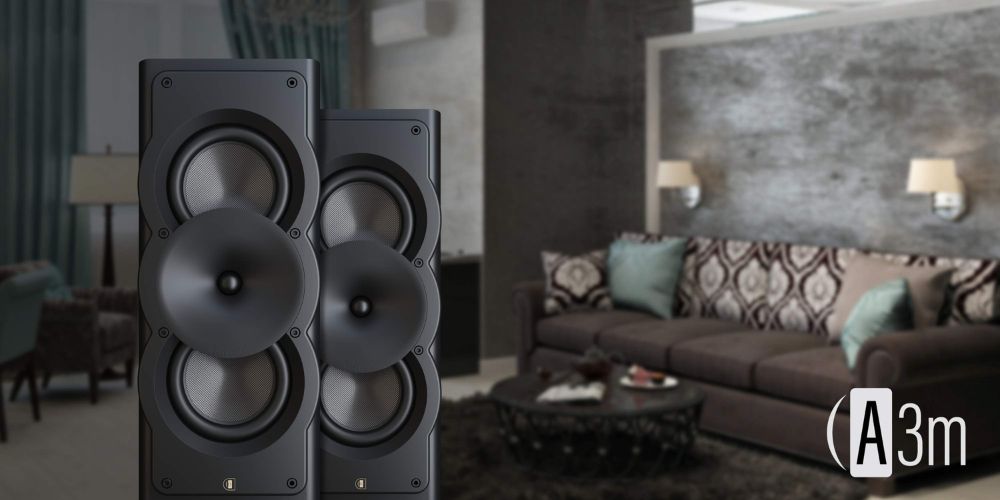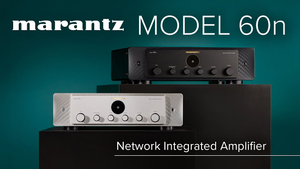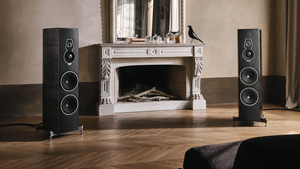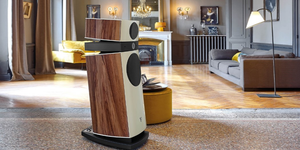
Perlisten A3m Monitor Loudspeaker: The Compact Powerhouse
Introduction: The Perlisten Paradox
In the often-staid world of high-end audio, the emergence of a new brand that achieves benchmark status almost overnight is a rare event. Yet, Perlisten Audio has managed precisely that. Since its arrival, the company has cultivated an enviable reputation built upon technically audacious, cost-no-object designs, exemplified by its flagship S and R Series loudspeakers. These ranges, celebrated for their innovative engineering and as the first in the world to achieve the stringent THX Dominus certification, established Perlisten as a purveyor of uncompromising performance. This raises a fundamental question, a paradox of sorts: How does a company renowned for its "no holds barred designs" translate that exacting ethos into a product line intended for a broader, more accessible market segment?.
The answer comes in the form of the new A-Series, a lineup positioned not as a dilution of the brand's core tenets, but as a careful distillation of them. Perlisten presents this series as its "most accessible loudspeaker lineup yet," engineered to embody the essence of its high-performance heritage at a more attainable price point. The company itself draws an analogy to the automotive world, comparing its S, R, and A series to the S-Class, C-Class, and A-Class tiers of Mercedes-Benz—distinct levels of performance and luxury, all bearing the same prestigious logo and commitment to excellence.
Within this new, more accessible family, the A3m monitor stands out as perhaps the most intriguing and ambitious model. Described alternately as a "compact powerhouse" and a "true chameleon," it is a loudspeaker that defies easy categorization. Its considerable size pushes the boundaries of a conventional stand-mount speaker, while its core design choices—most notably a sealed, acoustic suspension enclosure—hint at a very specific and multifaceted mission. This review seeks to dissect the A3m, to move beyond the marketing copy and determine if it truly delivers the foundational "Perlisten DNA". The central inquiry is whether the necessary cost-saving measures have resulted in a compromised product, or if Perlisten has successfully reinterpreted its philosophy, creating a new benchmark for performance and value in its class.

Unboxing and First Impressions: Form Follows Function
The term "monitor" or "bookshelf" speaker can conjure images of compact, unassuming boxes. The Perlisten A3m immediately dispels any such notion upon its unboxing. With dimensions of 675 mm in height, 280 mm in width, and 350 mm in depth (26.6 x 11.0 x 13.8 inches), its physical presence is formidable. This is a loudspeaker that blurs the line between a large stand-mount monitor and a short floorstander, and it commands a commensurate amount of space. Any prospective owner should plan for robust, high-quality speaker stands capable of safely supporting its considerable mass and providing the proper listening height; placement on an actual bookshelf is ill-advised and impractical.
The sheer solidity of the A3m is the next characteristic to make an impression, and it speaks directly to a foundational aspect of the Perlisten design philosophy. Even in this entry-level series, the company has eschewed common industry practice by opting for materials and construction techniques typically reserved for more expensive loudspeakers. The cabinet is not constructed from the ubiquitous Medium-Density Fiberboard (MDF), but from High-Density Fiberboard (HDF), a material that is 35% denser and thus inherently more resistant to vibration and resonance. This choice for a more inert enclosure material is a clear investment in a lower noise floor, aiming to ensure that the sound heard is that of the drivers, not the cabinet.
This commitment to acoustic inertness is further evidenced by the front baffle, which is a massive 50 mm thick. Its purpose is twofold. First, it provides an exceptionally rigid and stable platform for mounting the drivers, minimizing any microscopic movements that could smear detail. Second, by making the baffle slightly thicker than the main cabinet, its attachment creates a form of constrained layer damping—an advanced and highly effective technique for dissipating vibrational energy and further quelling unwanted resonances. This level of over-engineering is a tangible manifestation of Perlisten's claim that "nothing is off-the-shelf" and that every component is developed from the ground up with a specific performance goal in mind.
The fit and finish are executed to a very high standard. The A3m comes in an understated yet elegant satin black finish that is both durable and visually discreet, allowing it to blend seamlessly into a dedicated home theater or a stylish living room. While the exposed drivers and waveguide present a handsome, technical aesthetic, optional magnetic grilles are available for those who prefer a more subdued appearance.
Turning to the rear panel reveals a single pair of high-quality, five-way binding posts. This represents a pragmatic design choice; while some models in the higher-tier R-Series feature bi-wiring capability, the move to a single set of terminals on the A-Series is a sensible cost-saving measure that will have no practical impact on performance for the vast majority of users. Also present are integrated mounting points designed to work with Perlisten's proprietary tilt-swivel bracket. This inclusion is a critical nod to the A3m's role as a "chameleon," reinforcing its intended versatility for on-wall or even ceiling-mounted applications as a main, center, or surround channel in immersive audio systems.

The Engineering Heart: A Distillation of Ideals
While the A3m's cabinet construction is impressive, its acoustic performance is ultimately defined by its transducer and enclosure design. Here, the engineering choices reveal a clear strategy: to emulate the acoustic goals of Perlisten's flagship technologies through more cost-effective, yet still bespoke, solutions.
The Waveguide and Tweeter Assembly
The most visually and sonically defining feature of Perlisten's elite S and R Series speakers is the patented Directivity Pattern Control (DPC) Array—a sophisticated multi-driver assembly of a central tweeter flanked by two midrange domes, all housed within a complex waveguide. This array acts as a form of passive beamforming, meticulously shaping the speaker's sound dispersion to create a wide horizontal listening area while strategically limiting vertical dispersion to reduce detrimental reflections from the floor and ceiling. The A-Series, including the A3m, forgoes this expensive and complex array. However, it does not revert to a simple, flat-baffle tweeter implementation.
Instead, the A3m features a "newly developed waveguide paired with a 35mm Teteron composite dome tweeter". This is not merely a cosmetic flourish; it is a direct attempt to achieve the same acoustic philosophy as the DPC-Array through different means. The waveguide is precisely shaped to control the tweeter's dispersion pattern, aiming for that same ideal of broad horizontal coverage for a generous sweet spot, coupled with controlled vertical radiation to minimize interaction with room boundaries. This design demonstrates that Perlisten's commitment to managing directivity is a core principle that permeates its entire product hierarchy. It makes the speaker less dependent on a single, perfect listening position and more forgiving of room acoustics—a highly practical benefit for real-world listening environments.
The choice of dome material is also telling. The S-Series employs exotic Beryllium for its tweeters, prized for its incredible stiffness and control of high-frequency resonances, while the R-Series uses classic silk for its natural, smooth character. For the A3m, Perlisten selected Teteron, a polyester-based synthetic material. This choice represents a pragmatic engineering compromise. Teteron offers superior manufacturing consistency from unit to unit, improved resistance to humidity and temperature changes, and greater long-term durability compared to natural fibers. Sonically, it is known for a character that balances detail with smoothness, avoiding the potential harshness of metal domes while offering more precision than some softer materials. It is a choice that prioritizes reliable, repeatable high-performance.

Dual Carbon Fiber Woofers
Handling the midrange and low frequencies are two proprietary 215mm (approximately 8.5-inch) woofers featuring carbon fiber diaphragms. Carbon fiber is a material valued in high-performance loudspeaker design for its exceptional stiffness-to-mass ratio. This property allows the cone to act as a near-perfect piston, moving quickly and accurately in response to the musical signal without flexing or deforming, which can cause distortion and a loss of detail. The result is bass reproduction that is described as "tight, fast, and detailed," capable of preserving dynamics and texture even at high listening levels. The use of two such large drivers in a monitor speaker is ambitious, providing the necessary surface area to move significant amounts of air for impactful dynamics and substantial output capability.
The Acoustic Suspension Advantage
Perhaps the most critical design decision shaping the A3m's character is its 2-way acoustic suspension (sealed) enclosure. In an era where ported (bass reflex) designs are common due to their ability to achieve greater low-frequency extension from a given cabinet volume, the choice of a sealed box is a deliberate statement of sonic priorities.
This design inherently involves a trade-off. It prioritizes transient accuracy, bass control, and a predictable, gentle low-frequency roll-off over the sheer depth offered by a ported alignment, such as that used in the A3m's floor-standing sibling, the A3t. A sealed enclosure provides superior damping of the woofer cone, allowing it to start and stop with greater precision. This translates directly to a more articulate, rhythmic, and uncolored bass and lower-midrange presentation.
This choice is central to the A3m's identity as a "chameleon." For the dedicated two-channel audiophile, it delivers bass that is exceptionally quick and textured, excelling at reproducing the nuances of acoustic instruments and the complex rhythms of modern music. For the home cinema enthusiast, the predictable and gradual roll-off of a sealed design makes the A3m exceptionally easy to integrate with one or more subwoofers. There is no complex port output to account for, allowing for a seamless crossover and a cohesive, unified soundfield. This calculated compromise makes the A3m a master of two domains, satisfying the distinct demands of both stereophiles and cinemaphiles.
| Specification | Value |
| Enclosure Alignment | 2-way acoustic suspension |
| Tweeter | 35mm composite Teteron dome in a custom waveguide |
| Woofers | (2) 215mm carbon fiber diaphragm |
| Frequency Response (-6dB) | $41 \text{Hz} – 30 \text{kHz}$ |
| Typical In-Room Bass Extension (-6dB) | $40 \text{Hz}$ |
| Sensitivity ($2.83\text{v}/1.0\text{m}$) | $87.4 \text{dB}$ |
| Impedance | $4\Omega$ nominal / $3.0\Omega$ minimum |
| Recommended Amplifier Power | $50 – 250\text{W}$ |
| SPL Capability @1m (Peak) | $111.4 \text{dB}$ |
| Dimensions (H x W x D) | $675 \times 280 \times 350 \text{mm}$ ($26.6 \times 11.0 \times 13.8 \text{in}$) |

Setup and Listening Impressions: The Sound of Controlled Power
The technical specifications of the Perlisten A3m, particularly its sensitivity of 87.4 dB and a nominal impedance of $4\Omega$ that dips to a minimum of $3.0\Omega$, clearly indicate that a capable amplifier is a prerequisite for extracting its full potential. This is not a speaker for low-powered tube amplifiers or mass-market AV receivers. It demands an amplifier with substantial current delivery to properly control the dual 8.5-inch woofers and allow the speaker to achieve its considerable dynamic capabilities. For this evaluation, the A3m was paired with a high-current solid-state integrated amplifier rated at over 200 watts into $4\Omega$, fed by a high-resolution network streamer and DAC.
During setup, the benefits of the A3m's acoustic design became immediately apparent. Compared to rear-ported speakers of a similar size, the sealed alignment and controlled vertical dispersion make it remarkably forgiving of placement near room boundaries. While pulling the speakers out into the room will always yield the best results in terms of soundstage depth, the A3m is less prone to the excessive bass boom and bloat that can plague ported designs when positioned close to a wall. A moderate amount of toe-in was sufficient to lock the central image into sharp focus, with the waveguide's wide horizontal dispersion providing a stable and coherent soundstage across a wider-than-usual listening area.
Overall Tonal Character
The sonic signature of the A3m is one of commanding neutrality and balance, yet it is not sterile or clinical. Listening confirms the assessment that the A-Series leans "just ever so slightly warmer than the R-Series," presenting a sound that is both highly resolving and musically engaging. The Teteron dome tweeter is a standout performer, rendering high-frequency information with detail and air, but without a hint of the stridency or metallic etch that can induce listening fatigue. The description of a "very delicate high frequency extension" is apt; cymbals shimmer with realistic decay, and the upper harmonics of strings are present and clear without being artificially spotlit.
The midrange is where the Perlisten house sound truly shines. Thanks in large part to the incredibly inert HDF cabinet, the presentation is exceptionally clear, articulate, and free from audible coloration. Vocals, both male and female, are rendered with natural timbre and a palpable sense of presence. Complex instrumental passages are unraveled with ease, allowing the listener to follow individual musical lines within a dense mix. This is a speaker that communicates the core of the music with honesty and directness.

Bass Performance: Quality, Not Just Quantity
The performance of the A3m's low frequencies is the defining element of its sonic character and a direct result of its sealed enclosure. Listeners accustomed to the prodigious, sometimes over-damped, bass of many modern ported speakers will find the A3m's presentation revelatory. The emphasis is squarely on quality, texture, and speed. The bass is exceptionally taut, rhythmic, and controlled, with the leading edges of notes—the transient response—delivered with lightning-fast precision.
On tracks with complex, fast-paced bass lines, such as electronica or funk, the A3m excels, delivering each note with distinct pitch and impact, completely devoid of overhang or muddiness. With acoustic jazz, the woody resonance and subtle textures of a stand-up bass are communicated with a nuance that is often lost in speakers that prioritize sheer quantity. This is bass that serves the music, providing a powerful and articulate foundation without ever dominating the performance.
It is important, however, to be realistic about its extension. The typical in-room response down to 40 Hz at -6dB is respectable and sufficient for the fundamental notes of most instruments in the majority of musical genres. However, the visceral, room-shaking sub-bass found in blockbuster film soundtracks or the lowest pedal tones of a pipe organ will be attenuated. This is not a flaw, but the accepted and intentional trade-off of the acoustic suspension design. For full-range reproduction, the A3m is designed to be—and is an ideal candidate for—partnership with a high-quality subwoofer.
Soundstaging and Dynamics
The A3m's custom waveguide delivers on its promise, creating a soundstage that is both expansive and precisely defined. The horizontal spread of the sonic image extends well beyond the physical boundaries of the speakers, while instruments and vocalists are locked into place with superb stability and focus. The soundstage remains remarkably coherent even when moving off the central axis, a testament to the effectiveness of the dispersion control.
Dynamically, the A3m is a powerhouse. It is engineered to play loud and remain clean, with a peak SPL capability of over 111 dB. The speaker handles large-scale dynamic swings with effortless composure, transitioning from the quietest, most delicate passages to full-throated crescendos without any sense of strain, compression, or hardening of the sound. This ability to convey both micro-dynamic subtleties and macro-dynamic impact is key to its appeal for "high energy listening," making it as adept with rock and large-scale orchestral works as it is with intimate acoustic recordings. The low-distortion nature of the design means it can be pushed to surprisingly high levels before showing any signs of distress, delivering a clean, powerful, and immersive experience.

The Competitive Landscape: A Powerhouse Among Peers
To fully appreciate the Perlisten A3m's achievements, it is essential to place it within the context of its competitive landscape. The market for high-performance stand-mount speakers in its price bracket is fiercely contested, with many well-established and highly regarded models vying for the attention of discerning listeners.
Comparison vs. KEF LS50 Meta
The KEF LS50 Meta is a modern classic and a benchmark for compact monitor performance, celebrated for its revolutionary Metamaterial Absorption Technology (MAT) and Uni-Q coincident driver array. Its primary strengths lie in its exceptional point-source imaging, sonic transparency, and its ability to create a holographic, "disappearing act" soundstage where the speakers themselves seem to vanish.
Against such a formidable competitor, the Perlisten A3m carves out a distinct and compelling identity based on scale and dynamic capability. While the LS50 Meta is a master of nuance and precision in a small package, the A3m, with its much larger cabinet volume and dual 8.5-inch woofers, offers a presentation that is vastly superior in terms of dynamic headroom, bass authority, and overall physical scale. Where the KEF might begin to sound compressed or strained at very high volumes, the A3m remains composed and effortless, capable of filling a larger room with sound at near-live levels. The choice between them is a matter of priorities: for the listener in a smaller room who values the ultimate in holographic imaging above all else, the KEF remains a compelling option. However, for the listener who desires the imaging precision of a high-quality monitor but demands the visceral impact, dynamic range, and sheer room-filling ability that approaches that of a tower speaker, the A3m is the clear victor.
Comparison vs. Buchardt S400 MKII
Another highly respected competitor, particularly within the direct-to-consumer space, is the Buchardt S400 MKII. This speaker is lauded for its clever passive radiator design, which allows it to produce surprisingly deep and powerful bass from a relatively compact enclosure. Sonically, it is often described as having a "laid back," "silky," or slightly warm character that is non-fatiguing and musically immersive.
The Perlisten A3m offers a contrasting, yet equally valid, sonic presentation. Its acoustic signature is likely to be perceived as more strictly neutral and faster than the Buchardt's. The A3m's sealed enclosure produces a different flavor of bass—one that is less about ultimate depth and warm-toned weight, and more about speed, texture, and rhythmic precision. The Buchardt may provide a more potent low-end foundation without a subwoofer, but the A3m will counter with a greater sense of control and articulation in the bass and mid-bass regions. Furthermore, Perlisten's explicit focus on controlled directivity via its waveguide may result in a more focused, stable, and less room-dependent soundstage compared to the Buchardt's characteristically wide and enveloping presentation. The decision here comes down to a fundamental preference in sonic philosophy: the warm, deep, and immersive presentation of the Buchardt versus the tight, fast, and neutral accuracy of the Perlisten.
Conclusion: The Definitive High-Performance Chameleon
After extensive analysis and listening, the Perlisten A3m reveals itself to be a loudspeaker of profound capability and intelligent design. It is a product defined by a series of intentional choices, each one contributing to its unique and compelling character. Its acoustic suspension enclosure delivers world-class bass precision and control at the calculated expense of the deepest extension. Its bespoke waveguide, a direct descendant of the philosophy behind the flagship DPC-Array, provides a stable, wide, and immersive soundstage that is remarkably forgiving of room acoustics. And its massively overbuilt HDF cabinet provides a foundation of acoustic inertness that allows its high-quality drivers to perform with exceptional clarity and vanishingly low distortion.
The A3m is not a speaker for every listener. It is not for the individual seeking the deepest possible bass from a single-box solution. Rather, the ideal owner is the discerning audiophile who prioritizes rhythmic accuracy, dynamic realism, and tonal purity above all else. It is also, without question, the perfect choice for the serious home cinema enthusiast building a high-performance system, who requires main LCR speakers that can achieve reference sound pressure levels without strain and, crucially, are designed from the ground up to integrate flawlessly with high-quality subwoofers.
In the final assessment, the Perlisten A3m is a resounding success. It masterfully achieves its ambitious goal of distilling the brand's high-minded engineering principles into a more accessible, aesthetically discreet, and incredibly versatile package. It is a true "compact powerhouse" that delivers a substantial and deeply satisfying slice of genuine high-end performance, establishing a new benchmark for what a large monitor loudspeaker can and should be. It does not simply offer a "little taste of what Perlisten has to offer"; it serves up a full and richly rewarding musical and cinematic course.






Comments